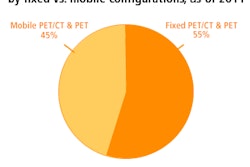Monday, November 28 | 3:20 p.m.-3:30 p.m. | SSE19-03 | Room S505AB
With the help of FDG-PET, researchers at the University of Washington are investigating a possible link between Parkinsonian motor symptoms and blast-related mild traumatic brain injury among Iraq and Afghanistan war veterans.Specifically, the study seeks to use FDG-PET images to assess any correlation between Parkinsonian motor symptoms and cerebral metabolic rate of glucose and white-matter integrity abnormalities in cortical and subcortical areas of the brain. By discovering any deficiencies, more effective therapeutic approaches may be used to treat injured veterans.
The male veterans, with an average age of 33.2 years and one or more blast-related brain injuries, received both a standard FDG-PET brain scan and a brain scan on a 3-tesla MRI system. The veterans' motor abilities were evaluated using the Unified Parkinson's Disease Rating Scale (UPDRS). All veterans in the study had UPDRS scores of greater than one (3.9 ± 2.8).
Higher UPDRS motor scores were associated with reduced cerebral metabolic rates of glucose in the antero-inferior temporal, parieto-temporal, and inferior frontal cortical regions of the brain, but not in the caudate or the brainstem, the group found. The higher scores were also associated with lower fractional anisotropy values in white matter in the inferior frontal and anterior temporal lobes.
Parkinsonian motor symptoms in veterans with repetitive blast-related mild traumatic brain injury are associated with abnormalities of the regional cerebral metabolic rate of glucose and white-matter integrity in widespread cortical and subcortical areas, the researchers concluded. Differential therapeutic approaches may be required for these veterans.




















